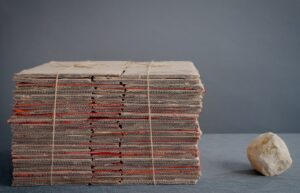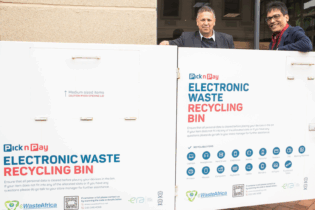There are some things that just don’t go together. You may enjoy a slice of apple pie with cream, but imagine eating a ground coffee sandwich or pap and vinegar? The same applies to recycling, where recyclables and non-recyclables need to be separated.
In order to sustain the recycling industry, there are some golden rules that need to be followed. Not only does this reduce harm to the environment, but it creates and sustains many jobs, (in both the formal and informal sectors). It also supports a circular economy where recyclables are converted into new products, reducing the demand for natural resources. A growing concern for recycling companies like Mpact Recycling, the leading paper and plastics recycler in Southern Africa, is the finding of waste with contaminants such as rocks, sand and water. This creates problems including damaging recycling equipment; rotting of paper and in turn the pathogens can cause damage to the health of the people working with the waste. “When It comes to paper and cardboard, these need to be dry to ensure they get recycled, explains John Hunt, Managing Director of Mpact Recycling. “If they are wet from being intentionally soaked in muddy water, or if rocks are concealed in cardboard bales, this can cause many of the problems outlined above.” “The contamination of recyclables not only has a negative impact on the recycling industry as a whole, but affects honest peoples’ livelihoods, and is detrimental to the environment,” he states. With regards to plastics – these need to be kept empty and clean to be recycled. If it is filled with sand, stones, liquids or any other contaminant it can cause serious damage to the recycling equipment. The full load then also has to be taken off the belt and sorted. Once again proving it’s important to put clean, empty recyclables into the recycling stream. To educate the public on how to recycle their waste in an effective way, Mpact Recycling has launched its ‘Some things just don’t go together’ campaign. This is aimed at creating awareness around materials which must be separated from recyclable waste.The recyclables and contaminants which feature in the campaign are most commonly received at Mpact Recycling’s branches. These include white paper mixed with water, cardboard mixed with muddy water, PET bottles filled with liquid, HDPE (milk bottles) filled with sand and soil, as well as recyclables mixed with biodegradables.
“Unfortunately, many people think that using biodegradable packaging is a better choice,” says Hunt. “This is a myth that we need to dispel as this type of packaging impedes the recycling process.” PETCO states in its Design for Recyclability Guide that biodegradable plastic packaging cannot be recycled, so when it is mixed with recyclables it impedes the recycling process. Not all biodegradable plastics break down at the same rate which makes logistics around this waste stream complex. Currently, there’s very limited separation, collection, and processing infrastructure to support the responsible post-consumer management of packaging made from biodegradable and compostable materials. Most fibre-based products are biodegradable because they eventually break down. So, in the case of paper and cardboard packaging, it is both recyclable and biodegradable. With paper packaging, first you would reduce, if not, you would reuse (however, it’s important not to add contaminants in this stage because it can continually be reused or recycled). If reducing and reusing are not options, default to recycling. “The aim of this year’s Clean-Up and Recycle Week campaign is to encourage more people to remember to separate, empty and clean their recyclables,” Hunt concludes. “ This will contribute to boosting the circular economy and in turn benefit the environment.”







